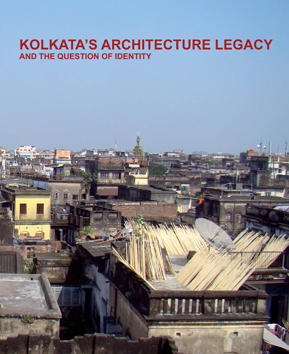Kolkata’s Architectural Legacy
and the question of identity

Students: Jeronimo Mejia, Diem Nguyen
Location: Group work in Kolkata
Date: November, 2008
Type: Research project, student work, Kolkata's Architecture Legacy
Background
As the “Second City of the Empire” and the most important seat of power, wealth and glory next to London during British rule Kolkata has an abundance of colonial buildings unsurpassed by any other city of this era. The Victoria Memorial, or the Writers’ Building are only a few of countless examples that show the grandeur and splendor with which the city adorned itself. It is not only these beacons of architecture and institutions which were central to the British rulers that were built in the colonial style. The architectural language can be found throughout the city, from small utilitarian buildings, residential houses to buildings of culture, religion and recreation. More significant maybe, a hybrid style of architecture, combining imported colonial elements with local ones has developed over time.
Themes
Much of this historical splendor has fallen into disrepair. The city’s climate – humid and hot – accelerates any sign of neglect and quickly facilitates a second nature to take over once heroic structures. While a number of key monuments are carefully being renovated and refurbished, many of the colonial buildings are seen to be in bad conditions and have even reached advanced states of dilapidation. The concept of preservation and of protecting historical landmark buildings, deeply rooted in a European concept of tradition and history, is slowly being taken up by the city of Kolkata, its administrative units and its general population. Heritage societies are being formed, heritage walks are offered to tourists and to the interested local population and buildings that have stood empty and derelict for long periods of time are suddenly ‘rediscovered’ and refurbished. But the concept of heritage and preservation is not an easy one, in the city where the independence movement took its initial impetus. Independent of their architectural and artistic value, are the buildings of the past seen as monuments to an era of foreign-rule? Is it not exactly the decadence of these edifices that the strife for independence tried to overcome? Do they not speak of a time that represents oppression and dependence? What is the public perception of these buildings? Is the hybrid architectural style a potential for the city to forgo the binary division that was introduced by colonial thinking?
Project
Document the current state of preservation projects and the general idea of protection of historical landmarks, using a limited number of case studies. Can you describe an alternative concept of ‘preservation’ that is more rooted in Indian ideas of history and tradition? Does the conflict of the colonial past impact of activities of preservation? Are the colonial buildings viable in the local climate, or is the project of preservation fraught and incongruous from the start?
Download the Book PDF

